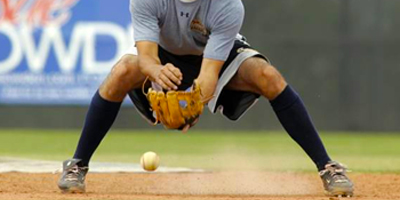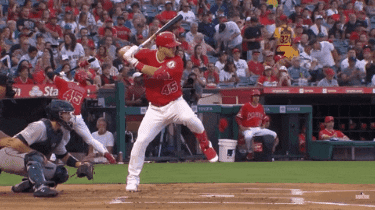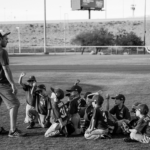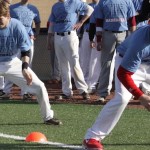For many youth baseball coaches, especially dads or parent volunteers, the temptation is strong to jump right into batting order strategies, base running tricks, or defensive shifts. But without a solid foundation, those advanced techniques won’t stick. The real magic happens when coaches focus on baseball fundamentals. The basics are where young ballplayers grow confidence, develop proper habits, and fall in love with the game.
Whether you’re coaching T-ball or Little League, here’s why the fundamentals matter and how to teach them in a fun, effective way.
Why Baseball Fundamentals Matter
Fundamentals are the bedrock of a successful baseball experience. At the youth level, many players are picking up a glove or bat for the first time. If they don’t learn the right way early on, poor habits can become difficult to fix later.
More importantly, mastering the basics gives kids a sense of achievement. A player who knows how to field a grounder properly or make a strong throw to first base is more likely to stay engaged and enjoy the game. It builds confidence and sets the tone for long-term development.
Core Skill #1: Throwing Mechanics
Why It Matters: Throwing is one of the most repeated actions in baseball, yet it’s often the most overlooked. Poor mechanics can lead to inaccurate throws and even injury down the road.
How to Teach It:
- Start with the grip: Teach kids to hold the ball with their fingertips using a four-seam grip.
- Break the throw into phases: “T, L, Throw, Follow-through.”
- Focus on body alignment: Step with the glove-side foot, point the glove toward the target, and rotate the shoulders.
- Practice with short distances and gradually extend the range.
Drill Example: Partner throwing at 15-20 feet with a focus on form. Give each step a nickname so it becomes second nature (e.g., “T-pose” for arms extended).
Core Skill #2: Fielding Ground Balls

Why It Matters: Fielding is where many young players first experience frustration. Teaching the right approach early boosts fielding percentage and player confidence.
How to Teach It:
- Emphasize the “Ready Position”: Feet shoulder-width apart, knees bent, glove on the ground.
- Teach “Alligator Hands”: Glove down, throwing hand above the glove.
- Focus on footwork: Teach players to move their feet to center the ball, rather than reaching.
Drill Example: Roll ground balls from 10 feet away. Reward proper form, not just clean catches. Incorporate cones to guide foot placement.
Core Skill #3: Catching Fly Balls
Why It Matters: Catching pop-ups and fly balls can be scary for beginners. Confidence and technique are key.
How to Teach It:
- Start with tennis balls or soft foam balls to reduce fear.
- Teach players to use two hands above the head, thumbs together.
- Reinforce the importance of calling for the ball: “Mine!”
- Teach proper footwork and tracking with the eyes.
Drill Example: Underhand tosses into the air with immediate glove work. Progress to pop-ups with real baseballs once confidence builds.
Core Skill #4: Hitting Mechanics

Why It Matters: Every kid wants to hit. But without solid mechanics, hitting becomes frustrating fast.
How to Teach It:
- Start with stance: Balanced feet, knees slightly bent, hands up by the back shoulder.
- Teach rhythm and load: Small movement back to generate power.
- Emphasize a short, direct path to the ball.
- Reinforce head down and eyes on contact.
Drill Example: Tee work is gold at every level. Focus on hitting the inside half of the ball with balance and control. Soft toss can add variety.
Core Skill #5: Base Running Fundamentals
Why It Matters: Good base running doesn’t require speed—it requires awareness. Young players need to learn when to run, how to take leads, and how to slide safely.
How to Teach It:
- Teach how to run through first base (not stop on it).
- Introduce rounding the bag with a banana-shaped path.
- Reinforce listening to base coaches.
- Practice tag-up rules and situational running.
Drill Example: Set up mini base running circuits. Practice going from home to first, rounding first to second, and responding to coach signals.
Core Skill #6: Catcher Basics (Optional for More Advanced Teams)
Why It Matters: Even if you don’t have a dedicated catcher, giving kids exposure to the position improves their overall baseball IQ.
How to Teach It:
- Start with the stance: Balanced, wide base, glove out front.
- Teach blocking technique: Drop to knees, glove between legs, chin down.
- Practice throwing position footwork.
Drill Example: Use tennis balls or soft balls to practice blocking and glove positioning. Reward effort, not perfection.
Keeping Fundamentals Fun
Kids learn best when they’re having fun. Mixing in competition and creativity can turn dry drills into favorite activities.
Ideas to Keep It Engaging:
- “Ground Ball King”: Who can field the most clean grounders in a row?
- Throwing accuracy games with targets like buckets or cones.
- Relay races that involve fielding and throwing.
- Wiffle ball scrimmages that emphasize technique over power.
How to Structure a Fundamentals-Focused Practice
A simple 90-minute practice structure could look like:
- Warm-up (10 mins): Jog, dynamic warm-up, and throwing progression.
- Skill Stations (45 mins): Divide into groups and rotate between throwing, fielding, hitting, and base running.
- Game Situation Drills (20 mins): Practice cutoffs, relays, or defensive alignments.
- Fun Game or Challenge (10 mins): End on a high note with a relay race or coach-pitch home run derby.
- Team Talk (5 mins): Recap what they learned, recognize effort, and preview the next practice or game.
Final Thoughts
As a parent or coach, your greatest impact often comes not from the wins and losses, but from the time you spend teaching the fundamentals and building a positive environment. When you invest in the basics, you’re giving every player the tools they need to grow, compete, and enjoy baseball for years to come.
Remember: Repetition, patience, and encouragement are the keys to success. And when in doubt, go back to the basics.






